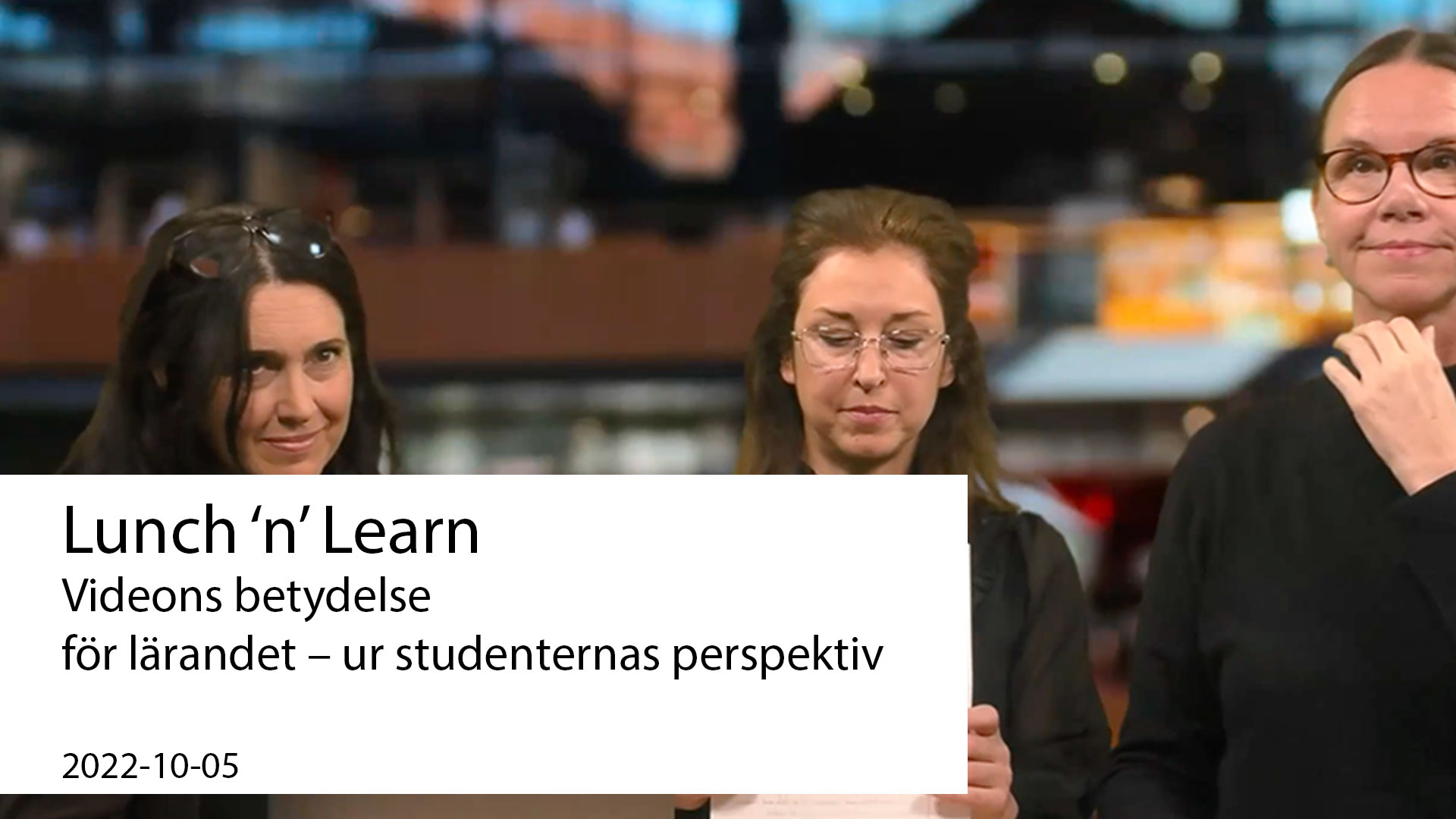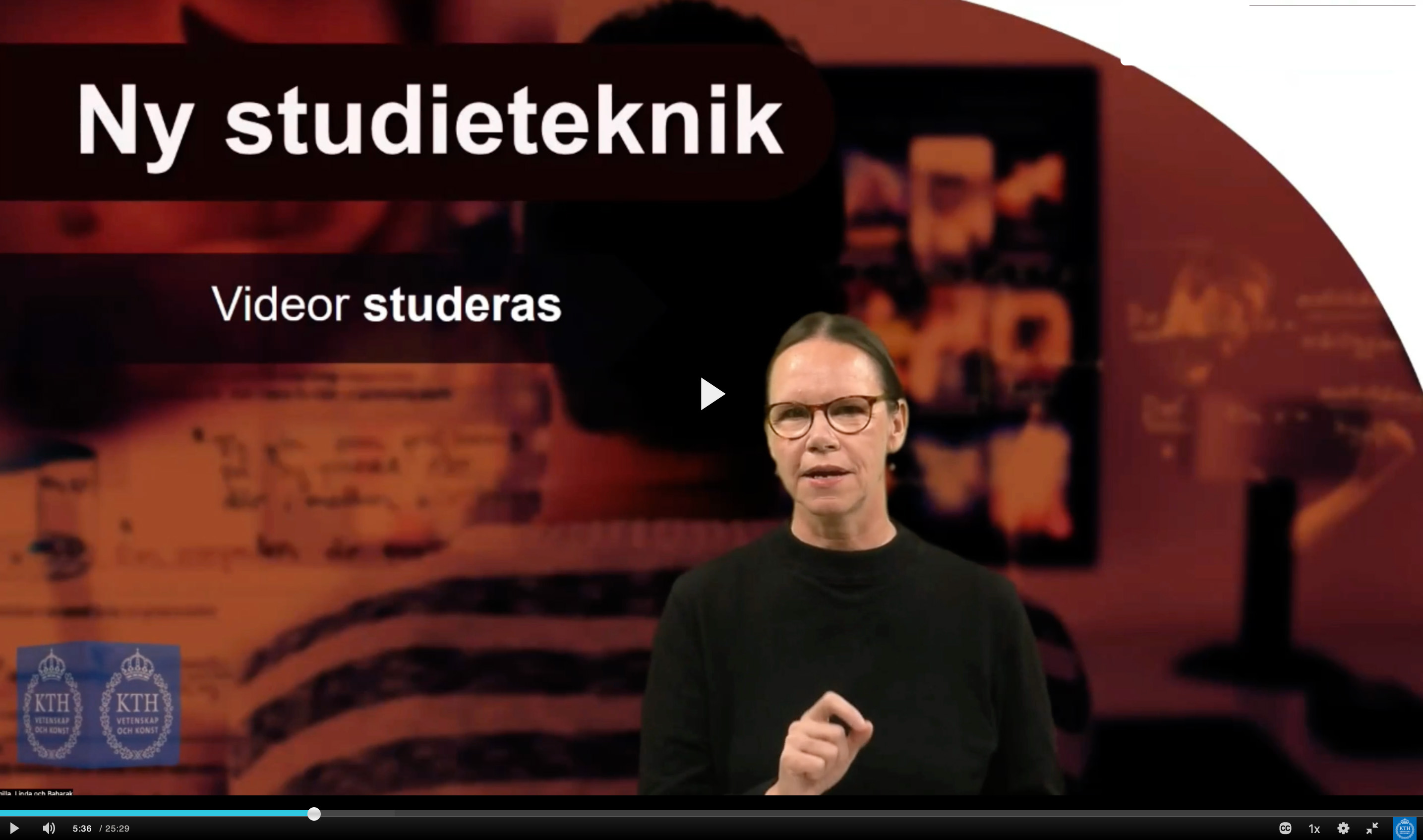How do students study video material in teaching?
Documentation from Lunch 'n' Learn 5 October 2022
Do students use instructional video as we think, or do they do it in other ways, and if so, how? What is the importance of video for inclusion? What does it mean that today’s students study videos instead of watching videos? These questions, and much more, were discussed at Lunch ‘n’ Learn when a study on students’ experiences with video was presented.
Presentation of study and subsequent question session and exchange of experiences
Video can be produced in various formats, from recorded lectures, live streams, and simpler mobile films to studio productions. Today video is a familiar element in teaching for most teachers and students. But what do we teachers know about how students experience video material as part of the teaching? How do students process video in their learning process? In this Lunch ‘n’ Learn, the study’s results that examined students’ view of the video in teaching were presented. After the presentation, there was room for questions and the exchange of experiences.
Among other things, the following were discussed:
- How students view live lectures in Zoom vs. recorded video.
- In what way video favors inclusion and the different needs of students.
- How video can create stress, both for the producer (the teacher) and for the recipient (the student).
- How video is perceived by many as a good supplement, but it needs to be in a clearly defined context.
- The importance of a well-thought-out course design.
As usual, participants could ask questions in the chat. Here is a selection of the questions that came up and were then raised for discussion:
- "Are there any thoughts on how large parts of a course can/should be in video form?".
- "How can one think and respond to concerns about the teaching role, am I no longer needed now...when video can replace a lot. That is, that fear".
- "Do you know what can be done in the video format to get the students started studying properly?".
- "How was the selection made of the students who participated in the study?".
Table of contents of the video
Here is a list of links that serve as a table of contents for the recording. Click on the link for the part you want to watch. When you get to KTH Play, click on the play button, and the video will start in the right place. All links lead to KTH Play. Please note that the videos are in Swedish.
00:00 Presentation of today's topic and presenters
02:01 How the practical research was done
03:30 Video requires its own study technique. How do the students do?
10:07 Examples of how students take notes
11:32 Different needs and video as an accesible resource
16:35 Information and course design around your video
20:50 Tips for teachers. What can we learn from the students?
24:25 Three reflection questions about video as a learning resource


